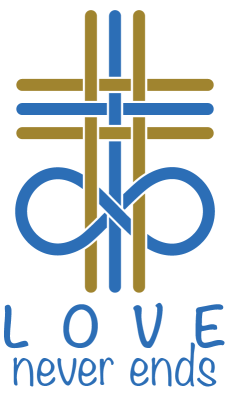| THE THIRD CANDLE The Liturgical Year and the Book of Common Prayer |
| This Sunday there is a color change in the candle to light on the Advent wreath. The color of the third candle is rose or pink and not blue. It is sometimes called the “Shepard’s Candle,” and is rose and not “pink” because rose is a liturgical color for joy. The third Sunday of Advent is Gaudete Sunday (the word “Gaudete” is Latin for “Rejoice) and is meant to remind us of the joy that the world experienced at the birth of Jesus, as well as the joy that the faithful have reached the midpoint of Advent. Did you know that there are liturgical colors in the Episcopal Church? -> Green: The color of vestments used during ordinary time. (Ordinary time is the rest of the year that’s not the Christmas or Easter season — it’s still important, it just has an unexciting name.) -> Purple or violet: Used during Advent and Lent, and along with white and black, these colors may also be used at Funeral Masses. (Note the color of the frontal on the altar this Sunday.) -> White and gold: Most appropriate for Christmas and Easter. -> Red: For on feasts of the Passion of Jesus and for the Holy Spirit, representing red tongues of fire, in addition to being worn for the feasts of martyred saints, who shed their red blood for Christ. -> Rose: On the Third Sunday of Advent and the Fourth Sunday of Lent, the color rose may be worn as a sign of anticipated joy. (I prefer rose and not pink, since rose contains purple for Advent while pink does not!) Source: Henderson, Charles. “The Significance of Color in Christian Symbolism” ©2004 September 16, 2004 http:// christianity.about.com/ Advent is also the beginning of a new liturgical year or season on the liturgical calendar. The services for the liturgical year are provided for in the Book of Common Prayer (BCP) in a three year sequence which is then repeated. As defined in the Episcopal Glossary, the BCP is the Official book of worship of the Episcopal Church. The BCP provides liturgical forms, prayers, and instructions so that all members and orders of the Episcopal Church may appropriately share in common worship. Anglican liturgical piety has been rooted in the Prayer Book tradition since the publication of the first English Prayer Book in 1549. The first American BCP was ratified by the first General Convention of the Episcopal Church in 1789. It was based on the Proposed Book of 1786, and the 1662 English Book of Common Prayer, as well as the Scottish eucharistic rite of 1764. \ The BCP is ratified by General Convention, with alterations or additions requiring the approval of two successive General Conventions. The General Convention may also authorize services for trial use. The process of Prayer Book revision led to publication of editions of the BCP for the Episcopal Church in 1789, 1892, 1928, and 1979. The BCP notes that “The Holy Eucharist, the principal act of Christian worship on the Lord’s Day and other major Feasts, and Daily Morning and Evening Prayer, as set forth in this Book, are the regular services appointed for public worship in this Church” (p. 13). Emphasis. While the BCP appears to me to be pleasantly static, culture merges with liturgy as there was a change in the wind at the last General Convention in July of 2022 with the passing of A059 (resolution). As noted, in the Episcopal News Service, A059 would, for the first time, define the Book of Common Prayer as “those liturgical forms and other texts authorized by the General Convention.” In other words, liturgies that are not in the current prayer book – such as same-sex marriage rites and gender-expansive liturgies – could be elevated to “prayer book status,” whether they are replacing parts of the prayer book or standing on their own. “What A059 is about, really, is acknowledging that common prayer is evolving,” said the Rt. Rev. Jeffrey Lee, bishop provisional of Milwaukee, chair of the House of Bishops’ Committee on Prayer Book, Liturgy & Music and one of the architects of A059. “And it creates a framework for that evolution to happen, including the inclusion of a number of different rites in a curated collection.” The resolution – which had garnered increasing attention in the weeks leading up to General Convention – would amend Article X of the Constitution of The Episcopal Church, which lays out how the Book of Common Prayer can be revised but has never specifically provided for authorized liturgies that are not proposed revisions to the existing book. Since it is a constitutional change, it will have to be approved in a second reading at the 81st General Convention before it can take effect. This Sunday we will light the third and pink candle. Traditionally, Scripture from Luke is read – Luke 1:39-56 Prayer – Stir up your power, O Lord, and with great might come among us; and, because we are sorely hindered by our sins, let your bountiful grace and mercy speedily help and deliver us; through Jesus Christ our Lord, to whom, with you and the Holy Spirit, be honor and glory, now and for ever. Amen. But we will take readings from Preparing to Become Beloved Community (Preparing-to-BBC-Advent-Year-B-EN.pdf (episcopalchurch.org) Next week we will explore Advent with respect to penance and the final coming of Christ and light the fourth candle which is blue. |

| God Loves You. No Exceptions. Hypothermia Shelter: THIS WEEK! Christmas Pageant: 12/17 in worship with special fellowship Contemplative Worship with Dinner: 12/17 6pm dinner, 6:45 worship Christmas Eve Services 4pm – Youth-Focused Holy Eucharist 8:30pm – Service Prelude with Harp 9:00pm – Traditional Rite II Holy Eucharist with Candlelight & Harp Feast of the Epiphany celebrated at Epiphany on 1/7 10am – Join us for worship with Bishop Stevenson Baptisms, Confirmations, Receptions, & Reaffirmations! |


